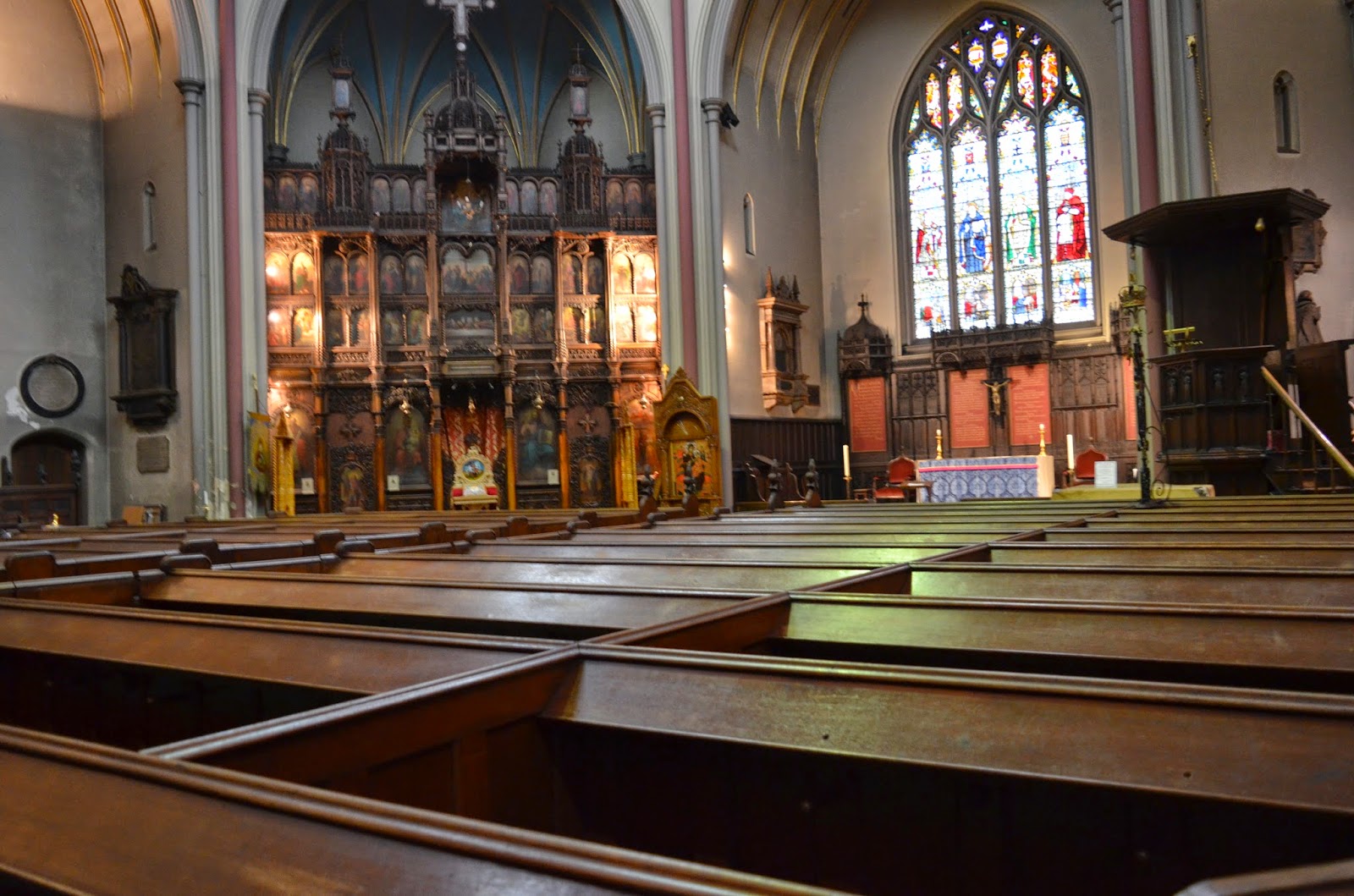Hi everyone!
These past three days have been busy for us, as we have been criss-crossing London examining various watched churches. As a reminder, the term "watched" means that the church was being attended to by a volunteer church watcher from the organization Friends of City Churches.
On Wednesday the team visited St. Magnus the Martyr, St. Stephen Walbrook, All Hallows London Wall, and St. Sepulchre's. At each of these locations we spoke to the church watchers on duty, and made note of important features of each building. Some of the major artworks we saw are pictured below:
Yesterday was equally as productive, as the team travelled to Camden to visit the Churches Conservation Trust, where we conducted an interview, then back to the city to visit to St. James Garlickythe. While today has been less exciting, we have begun to dive further into the piece of our project that examines access. We held an interview and we were surprised to find how many details are involved when considering whether a building is accessible or not!
Over all this has been another productive week, and we are learning a lot. We would also like to thank all of the people that have been helping us out with everything so far! This project would not be possible without the information that we have received from all of you. We're looking forward to week 3!
Over and out,
AAiC IQP Team
These past three days have been busy for us, as we have been criss-crossing London examining various watched churches. As a reminder, the term "watched" means that the church was being attended to by a volunteer church watcher from the organization Friends of City Churches.
On Wednesday the team visited St. Magnus the Martyr, St. Stephen Walbrook, All Hallows London Wall, and St. Sepulchre's. At each of these locations we spoke to the church watchers on duty, and made note of important features of each building. Some of the major artworks we saw are pictured below:
 |
| The beautiful Wren dome at St. Stephen Walbrook |
 |
| Part of the famous model of London Bridge that resides in St. Magnus the Martyr. Notice the reflection of the beautiful stained glass windows on the glass of the case. |
 |
| A stained glass window from within St. Sepulchre |
Over all this has been another productive week, and we are learning a lot. We would also like to thank all of the people that have been helping us out with everything so far! This project would not be possible without the information that we have received from all of you. We're looking forward to week 3!
Over and out,
AAiC IQP Team





























